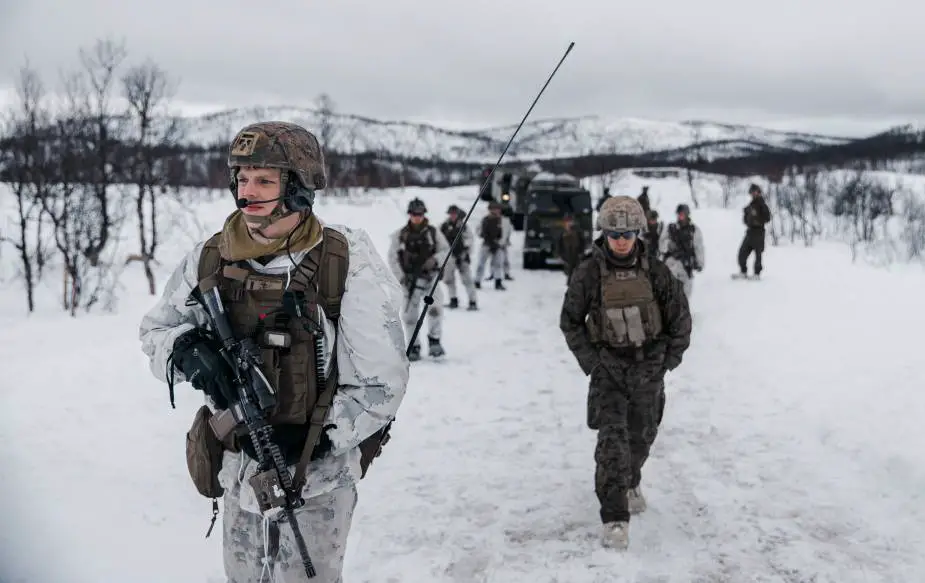Breaking news
US Marines and Norwegian military conduct exercise Arctic Littoral Strike in northern Norway.
U.S. Marines and Sailors with Marine Rotational Force-Europe 21.1 enhanced their warfighting ability above the Arctic Circle during exercise Arctic Littoral Strike in Northern Norway from March 11-31. 2nd Lt. Kayla Olsen, U.S. Marine Corps Forces Europe, reports.
Follow Army Recognition on Google News at this link

U.S. Marines conduct a combat patrol as part of Exercise Arctic Littoral Strike in Blåtind, Norway, March 30 (Picture source: USMC/Cpl. Patrick King)
“This exercise demonstrated the battalion’s capability to operate inside actively contested maritime spaces, in this case, arctic littoral spaces, and to provide support to joint fleet operations,” said Lt. Col. Ryan Gordinier, the MRF-E battalion commander. “The Marine Corps has demonstrated an interest in developing expeditionary advance basing capabilities in the Pacific, and we took advantage of the opportunity to exercise those concepts in the Arctic.”
Exercise Arctic Littoral Strike enabled elements from MRF-E 21.1 to experiment with emerging defense concepts and to confront the challenges of anti-access, area-denial capabilities posed by a notional peer adversary. The Camp Lejeune-based Marines and Sailors of 3rd Battalion, 6th Marine Regiment conducted experimentation of the future force by supporting simulated sea-denial operations in arctic littoral terrain.
“I’m satisfied that our allies have achieved success on their training while in Norway,” said Maj. Gen. Lars Lervik, chief of the Norwegian Army. “A complex exercise like this, including other Norwegian branches as well, will always increase the alliance’s ability to implement complex operations and strengthen the collective defense of NATO.”

A U.S. Marine communicates with Marines downrange as part of Exercise Arctic Littoral Strike in Blåtind, Norway, March 30. (Picture source: USMC/Cpl. Patrick King)
Joint naval integration was the first focus of the four-stage exercise. Exercise Arctic Littoral Strike enhanced sea-denial capabilities by pairing mobile MRF-E elements with Norwegian naval forces in the Arctic fjords.
MRF-E’s Light-Armored Reconnaissance Company received a training mission that required the unit to “secure the bridge” by observing along routes that could be used by an adversary, and then reporting their observations in order to allow a Norwegian submarine the ability to move without being impeded by notional enemy forces. MRF-E’s LAR Company conducted integrated training with the Norwegian Submarine Command Course that enhanced their interoperability with combined naval forces.
“Because of the terrain, the tactical scenario placed the Norwegian submarine in a position of vulnerability,” said Capt. Joe Tortorici, LAR company commander. “Our efforts to conduct effective over-watch were critical to the survival of not only our Marines, but also to the joint force’s ability to operate within the adversary’s weapons engagement zones. Our ability to do that in the future will ultimately enable us to integrate directly with naval assets, as we have done in this exercise with the Norwegian submarine, and support larger naval campaigns.”


























